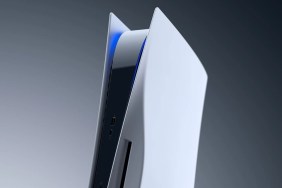Mark Cerny, the PS4’s Lead System Architect, must be getting pretty excited as Sony’s new console is less than two months away from hitting store shelves in the United States and Canada.
Even though a number of titles that are due to release for the PS4 are already taking advantage of the new hardware, Cerny has told Edge that he wanted a design that could be explored for years to come:
Well, as a programmer myself, I wanted to be sure that there were lots of fun little features in the hardware that people could really explore in the later years of the console lifecycle. So when it came down to designing the feature set for years three and four of the console, that isn’t something where the development community could contribute as broadly because it had much more to do with personal vision about where GPGPU was going. I definitely did pitch it to a broad variety of teams and get their feedback, but there were many, many small and large decisions that had to be made in terms of actually creating the details of that hardware.
As it took developers a number of years to unlock the power of the PS3, it could be a while before we see the true potential behind the PS4, but Cerny explains not only when to expect it but what we will see in the coming years:
There are definitely some features in the PlayStation 4 that start to get used broadly in the third or fourth year of the console lifecycle. It’s all about how the GPU and CPU can work together to do many tasks other than graphics, which is say that photorealism is a great target, but that world simulation is also important. This is underappreciated, but getting your audio right in a game and making sure that your character’s ears are really hearing what they should within the game universe takes a tremendous amount of processing power. And there’s a lot of features in the GPU to support asynchronous fine-grain computing. ‘Asynchronous’ is just saying it’s not directly related to graphics, ‘fine grain’ is just saying it’s a whole bunch of these running simultaneously on the GPU. So I think we’re going to see the benefits of that architecture around 2016 or so.
He went into a little bit more detail regarding that last sentence by saying, “With the PlayStation 4, it’s even such things as the share cores have a beautiful instruction set and can’t be programmed in assembly. If you were willing to invest the time to do that, you could do some incredibly efficient processing on the GPU for graphics or for anything else. But the timeframe for that kind of work would not be now. I don’t even think it would be three years from now.”
After hearing this, how excited are you for the PS4 and future of gaming as we wait for the year 2016 or 2017? Let us know in the comments below.
Essential Reading:








